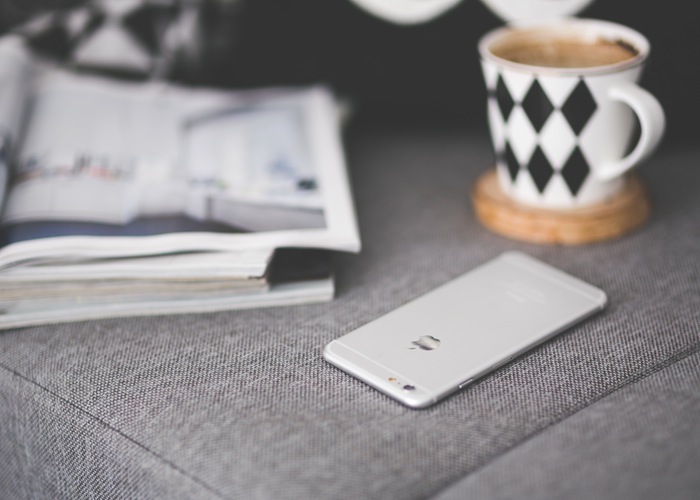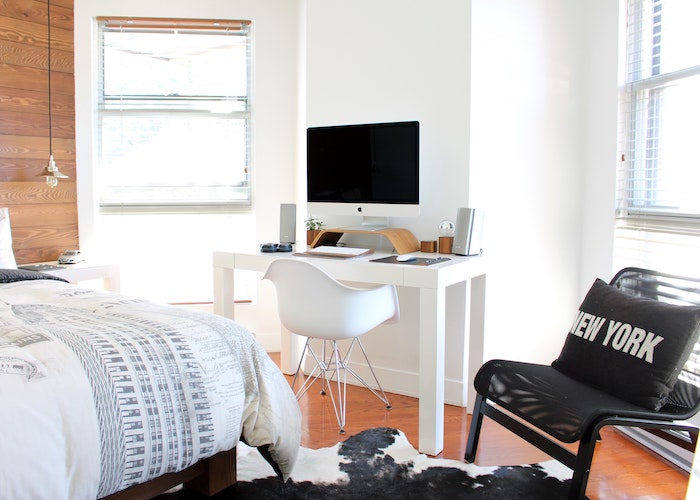How I Learned To Save And Pay Down Debt (At The Same Time)
When I graduated college, building a savings account was the least of my concerns. Like many other new post-grads, I was consumed with the idea of paying off my $31,000 in student loans as quickly as humanly possible. Ten years of debt could kiss my ass. Getting rid of my debt was (and maybe still is) an obsession I struggle with. I wanted to throw every ounce of my income — that wasn’t already allocated to other bills — straight at my debt. To be completely honest, saving on the side seemed ridiculous. My plan was to hustle, pay down my debt in five years, and then make savings a priority.
I didn’t think about paying my loans at all during my time in college. While I paid out-of-pocket for whatever wasn’t covered by my student loans or my financial aid, I usually paid in a lump sum at the end of the summer. I would work all summer, save the money I needed for tuition, and then wipe out my savings when it was time to pay for school. I was used to this system, and I was planning on using this exact method when my first Stafford loan payment rolled around in December 2014.
In the months leading up to my first student loan payment, I worked to save double the amount of my first payment. My Stafford loans from Great Lakes are about $300/month. I wanted to save $800. Though I live at home, expenses still added up — I visited a good friend in San Diego, and I helped my mom pay to fix her car. Overall, I saved just over $600. I logged on to Great Lakes and tried to pay the full $600 directly from my savings. Great Lakes wouldn’t accept the payment. To say I was pissed is an understatement. There wasn’t anything wrong with my payment, but my bank required that I move the money into my checking account first, and then pay my loans. While this may seem like a minor setback, it made me stop and rethink my loan repayment strategy. Somehow the act of transferring the money from my savings to my checking account before paying my loans made me realize that I didn’t want to wipe out my entire savings account. I used $500 toward my first loan payment and kept the remaining $100 in savings. I had been cleaning out my savings to pay for school for four years, and it finally seemed like it was time for me to keep some money in savings.
At that moment, I decided to blow off my original plan of only saving after I paid off my debt. I had just started working a temp job at a library and there was no guarantee that I would be able to keep the position in six months (thankfully, I did). I wanted to start saving and create an emergency fund; if I lost my library job, I’d have some money stashed away to fall back on. In the last year, I’ve learned that I needed my savings even more than I thought. I was working two jobs — the library job, and a job at a local movie theater — and sometimes my hours at the theater got cut. As a result, my paychecks at the theater, unlike the library, were never consistent. Putting money away into my savings account provided the consistency I needed.
My savings fluctuated throughout the year. I used some of the money I’d saved to help pay off my former credit card debt. I dipped into my savings and used my tax return to pay off a small Perkins loan. I needed my savings to fix my car and to buy a new computer when my old one died a few months ago. I was very careful not to wipe my account completely. I always made sure to leave a cushion in my savings account. While I still make my loan payments every month, given the choice between keeping more money in my savings account, or paying extra money toward my student loans, I now choose the former. (Though I strive to save well and pay extra on my loans each month.)
When I was first hashing out my debt repayment strategy, I started reading more about personal finance. I learned that Dave Ramsey recommends starting your emergency fund with at least $1,000. Thus, my goal for the end of 2015 was to have $2,000 in my emergency fund. (Eventually, I would love to have enough to cover three-to-six months of expenses in my emergency fund, but I’m taking things one step at a time for now.) I left my crummy movie theater job and got a better gig as a receptionist at a music academy. Between my library job and the receptionist job, I now have time to work, write, pay down my debt, and build my savings.
My goal is to continue saving while paying down my debt. When I think back to my original strategy of not saving until my debt was paid off, I realize the flaws in my plan. Repairing my car cost me $1,400. And there will always be other expenses that come up, whether they are for my car or my health. Right now, I live at home, but I still contribute to our living expenses, and if I want to move out in the future, I need to have a lot in savings.
The beauty of living at home is that I’m still able to make bigger payments on my student loans almost every month. Once the debt is gone, I’ll have more than just a few thousand dollars in savings. In my opinion, this is a much better position to be in than paying off my debt sooner and having no money in savings. In the event of an emergency, I won’t have to turn to my credit card like I’ve done in the past. If anyone is on the fence about starting an emergency fund right after college, I suggest you start saving and setting aside money for emergencies as soon as possible. It’s a year later, and I’m grateful that I’m paying off debt and saving at the same time.
Myah Jonet is a writer based in New Jersey.
Image via Pexels





